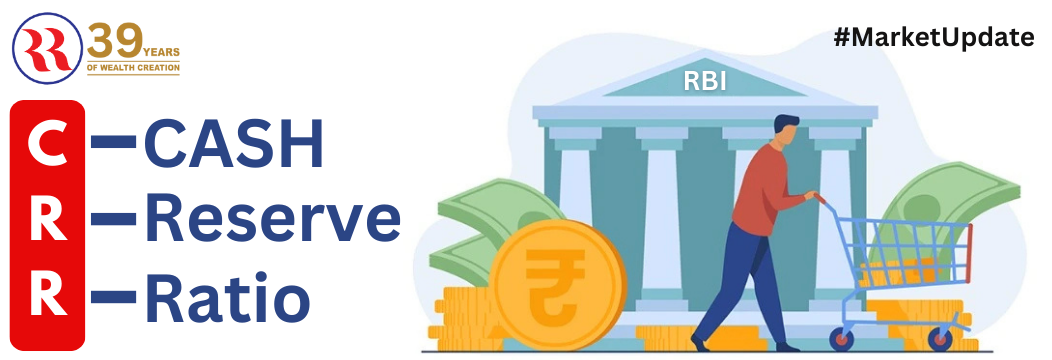
A recent report by the State Bank of India (SBI) shows a potential shift in the Reserve Bank of India's (RBI) approach to using the Cash Reserve Ratio (CRR). Instead of being just a liquidity management tool, CRR may be increasingly used as a regulatory intervention mechanism to stabilize the financial system and manage liquidity more effectively.
Key Insights from the SBI Report
1. CRR as a Countercyclical Liquidity Buffer
Historically, the RBI has used the CRR to regulate the amount of liquidity in the banking system by requiring banks to maintain a certain percentage of their deposits as reserves. However, the SBI report suggests that going forward, the RBI might reposition CRR as a countercyclical liquidity buffer, meaning it would be adjusted based on macroeconomic conditions rather than short-term liquidity management needs.
This shift could indicate a more long-term and strategic use of CRR, where changes in reserve requirements would serve to moderate excess liquidity during economic booms and provide stability during downturns.
2. Need for a Revamp in Liquidity Management Framework
The SBI report underscores the urgent need for the RBI to revisit its liquidity management framework. With evolving market conditions, the current mechanisms, including Open Market Operations (OMO) and Variable Rate Reverse Repo (VRRR) auctions, may require adjustments to ensure better financial stability and monetary policy transmission.
The report suggests that by making CRR a more dynamic tool, the RBI could improve its ability to control inflation, manage credit flow, and respond to external economic shocks.
3. Possibility of a Repo Rate Cut in 2025
According to the report, there is a potential for a repo rate cut in 2025, given the current economic landscape. If inflation remains under control and global financial conditions remain stable, the RBI may adopt a more accommodative stance to support economic growth.
A reduction in the repo rate could lead to lower borrowing costs, increased credit availability, and a boost to economic activity, particularly benefiting industries reliant on financing, such as real estate, infrastructure, and MSMEs.
4. Rethinking the Role of Weighted Average Call Rate (WACR)
The SBI report also suggests that the RBI should consider replacing the Weighted Average Call Rate (WACR) as the primary policy rate. The WACR represents the rate at which banks borrow and lend in the overnight market, but SBI argues that it may not be the most effective benchmark for guiding overall monetary policy.
If the RBI shifts away from WACR, it could impact short-term interest rates, the interbank lending market, and how liquidity is managed within the banking system.
Conclusion
The RBI’s evolving approach to CRR and liquidity management could have far-reaching implications for the financial system and investors. As regulatory policies shift, market participants must stay vigilant and adaptive to leverage new opportunities while mitigating potential risks.
Investors should keep a close watch on RBI policy announcements and economic indicators to make informed investment decisions in this changing financial environment.
About RR Finance
An integrated financial services group, offering a wide range of financial products and services to corporations, institutions, high-net-worth individuals, and retail investors
Explore a wide range of investment opportunities with RR Finance
Disclaimer : The recommendations, suggestions, views, and opinions expressed by experts are their own and do not reflect the views of RR Finance. This news is for information purposes only, not investment advice.